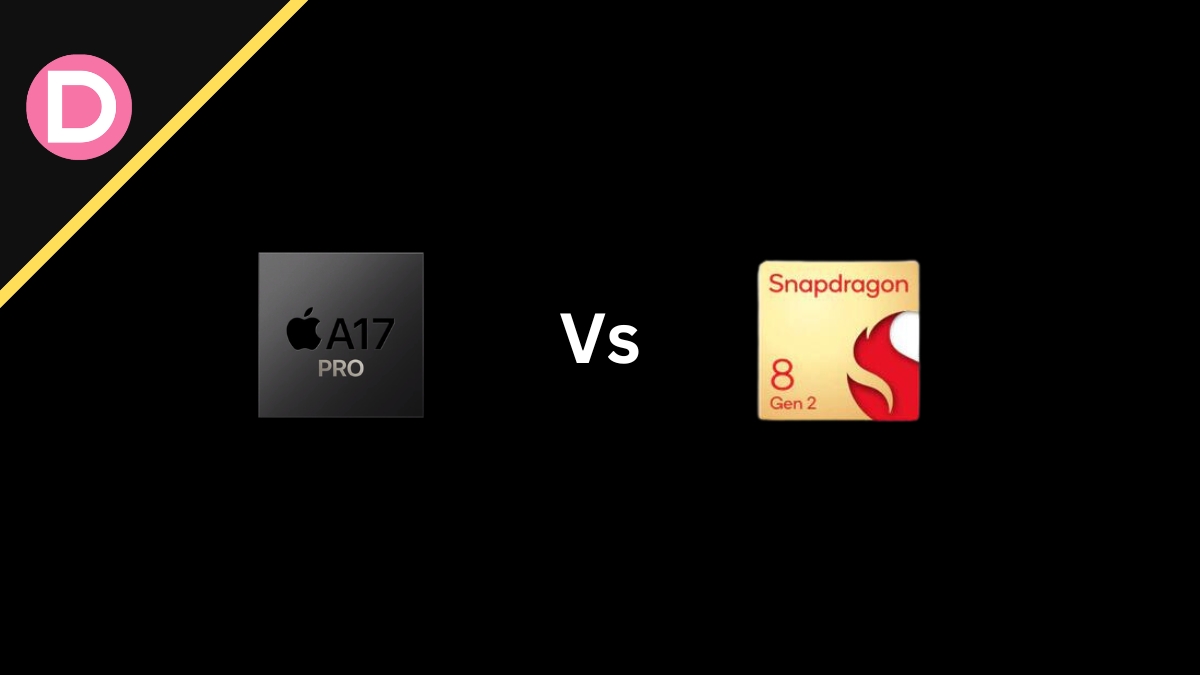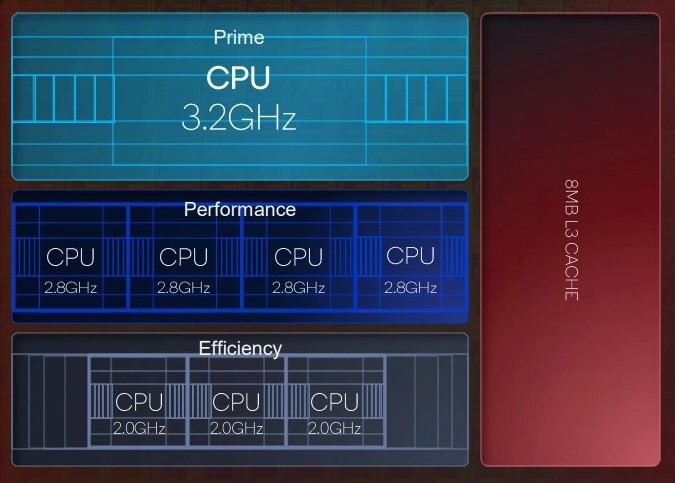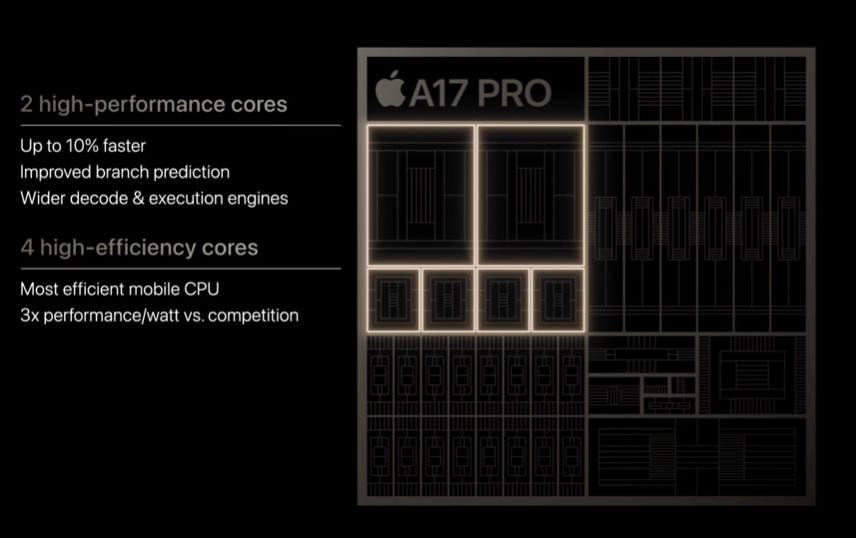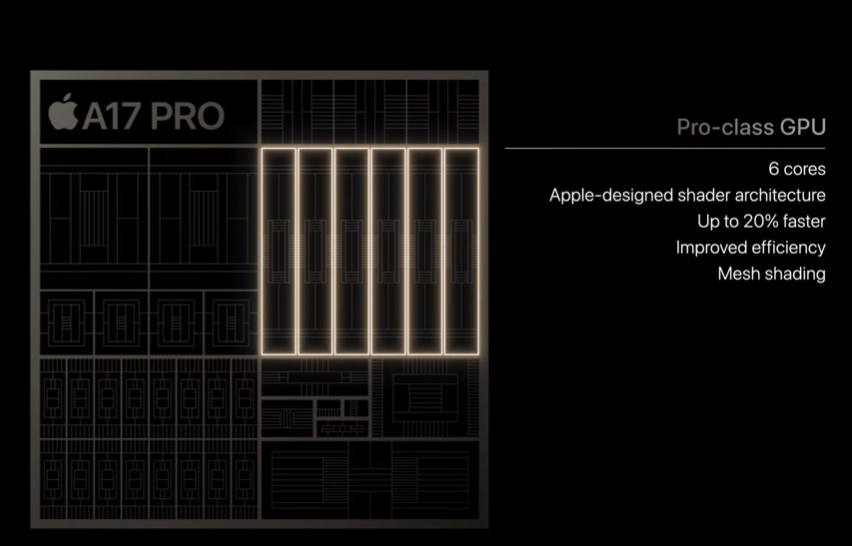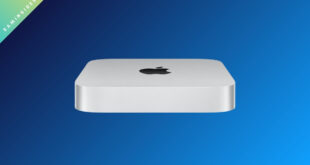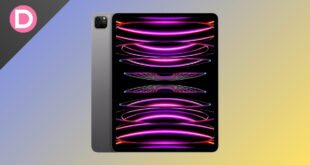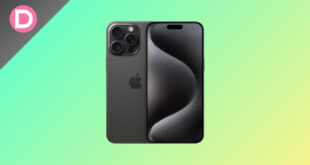Apple introduced its latest mobile chipset, the A17 Pro, during the Wonderlust keynote. The A17 Pro is the successor to the A16 Bionic that was released last year with the iPhone 14 Pro and iPhone 14 Pro Max. And yes, just like last year, the newer A17 Pro is exclusive to the iPhone 15 Pro and iPhone 15 Pro Max.
With Apple’s latest mobile chip out, there is always a question about how it compares to the rest of the mobile chips, especially Qualcomm’s latest flagship chip. This time, we have the Snapdragon 8 Gen 2 competing with the A17 Pro. Let’s take a look at how these two chipsets compare and which one of them is better.
A17 Pro: What’s New?
Before we move ahead, let’s look at what’s new with the A17 Pro chipset. Here are some of the key improvements and changes:
- New and improved 3nm fabrication process (TSMC)
- 19 billion transistors
- Hexa-Core CPU with higher clock speed
- A redesigned Hexa-core GPU
- MetalFX Upscaling
- Hardware-accelerated ray tracing
- AV1 decoder
- Improved efficiency
Apple A17 Pro vs Snapdragon 8 Gen 2
1. CPU Performance
The Apple A17 Pro, with its hexa-core CPU architecture featuring two 3.70 GHz Everest Cores, is unquestionably one of the most powerful mobile chips on the market. It also has four Sawtooth cores for power efficiency.
The Snapdragon 8 Gen 2’s octa-core CPU takes a more balanced approach. The Cortex X3 (Primary Core) has 3.2 GHz of clock speed (3.36 GHz on the Galaxy version), the four performance cores have 2.8 GHz, and the three efficiency cores have 2 GHz.
As you can probably tell, the Apple A17 Pro has a significant raw clock speed advantage. Furthermore, Apple’s hardware and software often work together to give outstanding performance using the CPU.
Despite Apple’s advantages in clock rates and integration, the CPU performance of the Snapdragon 8 Gen 2 should not be overlooked. It is mighty enough for most daily tasks and even heavy gaming.
Although Apple has an advantage over the Snapdragon 8 Gen 2 in raw CPU performance, the difference may be imperceptible in everyday use, particularly over time.
When comparing raw CPU performance, Apple’s A17 Pro has the advantage due to higher clock speed and a higher level of integration. The Snapdragon 8 Gen 2 is a tough competitor, thanks to its powerful CPU that can give a flawless user experience.
Winner: A17 Pro
2. GPU Performance
Apple has made substantial progress in improving the GPU performance of the A17 Pro. The A17 Pro has a redesigned 6-core GPU architecture, which means one extra GPU core than its predecessor. Apple has improved its performance with higher memory bandwidth and other enhancements.
Furthermore, the addition of hardware-accelerated ray tracing on the A17 Pro is notable, matching industry trends toward more immersive visual experiences. Despite a power-hungry feature like hardware-accelerated ray tracing, Apple has most likely tuned it for increased efficiency.
Apple has also claimed that a new feature called MetalFX Upscaling uses the GPU and the Neural Engine to improve the graphics. This results in better graphics without compromising on efficiency.
As for the Snapdragon 8 Gen 2 boasts the Adreno 740 GPU, which not only outperforms its predecessor by 25% but also achieves up to 45% higher efficiency. It supports Vulkan 1.3 and adds hardware-level ray tracing capabilities like the A17 Pro.
This ray tracing function is very important for gamers since it allows for the real-time rendering of hyper-realistic images with exact ambient occlusions and reflections.
The Snapdragon 8 Gen 2 outperformed the A16 Bionic last year regarding GPU performance, but we are yet to see how it compares against the A17 Pro.
Winner: Inconclusive
3. ISP (Image Signal Processors)
The new A17 Pro from Apple improves on the Photonic Engine, which has been improved. This is to enhance the photos in terms of clarity and depth. This ISP also allows the A17 Pro to take 48MP Pro RAW images.
Electronic Image Stabilisation (EIS), which helps stabilize Action Mode video at resolutions up to 2.8K, is another feature that relies heavily on the A17 Pro’s ISP. Apple also supports continuous recording in 4K @60 FPS in Dolby Vision HDR and Apple ProRes. The new ISP also brings a new Smart HDR 5 for better HDR performance. Plus, there are also night mode portraits.
The 18-bit Triple ISP design of the Snapdragon 8 Gen 2 is great for taking images with a large number of individual pixels. It has a shutter lag of less than a millisecond and a resolution of 200 megapixels. It can also shoot 8K HDR videos @60 FPS, which the A17 Pro cannot.
Both the chips support the AV1 codec. Popularity stems from the codec’s efficient video compression, which allows high-quality video transmission at lower bitrates. This improves the responsiveness of video playback and streaming for devices.
The Snapdragon 8 Gen 2 also features a Cognitive Engine similar to Apple’s Photonic Engine but has several advantages. Using semantic segmentation, this Cognitive Engine improves photos in real-time, with better dynamic range and exposure. It also uses AI to enhance the image quality.
Winner: Inconclusive
4. Battery Life and Efficiency
The A17 Pro is based on TSMC’s latest 3nm fabrication process, which is much more efficient than the 4nm process on the Snapdragon 8 Gen 2. Apple’s chips are already known for their low power consumption and efficiency, and the A17 Pro is no different.
Given all the specifications, the A17 Pro is more power-efficient than the Snapdragon 8 Gen 2. However, don’t let this fool you into thinking that the Snapdragon 8 Gen 2 is inefficient. It’s just not as efficient as the A17 Pro.
Winner: A17 Pro
5. AI & ML
The A17 Pro’s powerful neural engine, with 35 trillion operations per second, can easily outperform the Snapdragon 8 Gen 2 in artificial intelligence.
This should result in advanced artificial intelligence capabilities, such as improved multi-language translation and quicker natural language processing, beyond mere raw processing power.
The Hexagon Processor and other AI-related technologies in Qualcomm’s Snapdragon 8 Gen 2 improve upon the company’s already impressive AI foundation. Qualcomm also remains at the forefront of AI and machine learning capabilities in mobile chipsets, giving tough competition from Apple’s A17 Pro.
Winner: A17 Pro
6. Connectivity
The A17 Pro is not very impressive regarding the connectivity aspect. It uses the Snapdragon X70 modem, like the Snapdragon 8 Gen 2. The modem has a peak speed of 10 Gbps downstream and 3.5 Gbps upstream.
Coming to Bluetooth and Wi-Fi, the A17 Pro still only supports Wi-Fi 6E (two times faster than Wi-Fi 6) and Bluetooth v5.3. On the other hand, the Snapdragon 8 Gen 2 supports Bluetooth v5.3 and Wi-Fi 7, which is much faster than Wi-Fi 6E.
Wi-Fi 7 can provide 5.8 Gbps throughput with less than 2 ms of latency. While few devices can take advantage of its higher transfer rates, Wi-Fi 7 ensures that a high-speed wireless connection will be available.
Both chips have functionality for head tracking and Spatial Audio, making it possible to have an immersive audio experience with either.
The Snapdragon 8 Gen 2 also supports a couple of additional connectivity standards such as LE Audio, Dual Bluetooth Antenna, and aptX Lossless, which give it a clear edge over the A17 Pro. The Snapdragon 8 Gen 2 is a clear winner regarding connectivity.
Winner: Snapdragon 8 Gen 2
Which One is Better?
The Snapdragon 8 Gen 2 and the Apple A17 Pro are excellent chipsets with powerful general-purpose functionality. Both choices provide supreme functionality, improved visuals, and cutting-edge photography and AI tools for their users.
While the A17 Pro excels in raw CPU performance and efficiency, it loses out to the Snapdragon 8 Gen 2 in other aspects. Nevertheless, it doesn’t mean that one of them is bad and unusable in the aspect they lose.
Real-world testing and comparisons considering real-world usage scenarios are necessary for making an educated decision. This guarantees that consumers can opt for the chipset that suits their requirements and tastes. Monitor ratings and benchmarks to get the best sense of how these chipsets perform.
